HIV Surveillance Special Report — Number 32


The National HIV/AIDS Strategy and the Ending the HIV Epidemic in the U.S. initiative aim to reduce new HIV transmissions in the United States by 90% by 2030 and prioritize reducing HIV-related disparities and health inequities and improving the health and well-being of people with HIV. The CDC Medical Monitoring Project (MMP) reports representative data on barriers to care and viral suppression, including social determinants of health and indicators of quality of life among adults with diagnosed HIV.
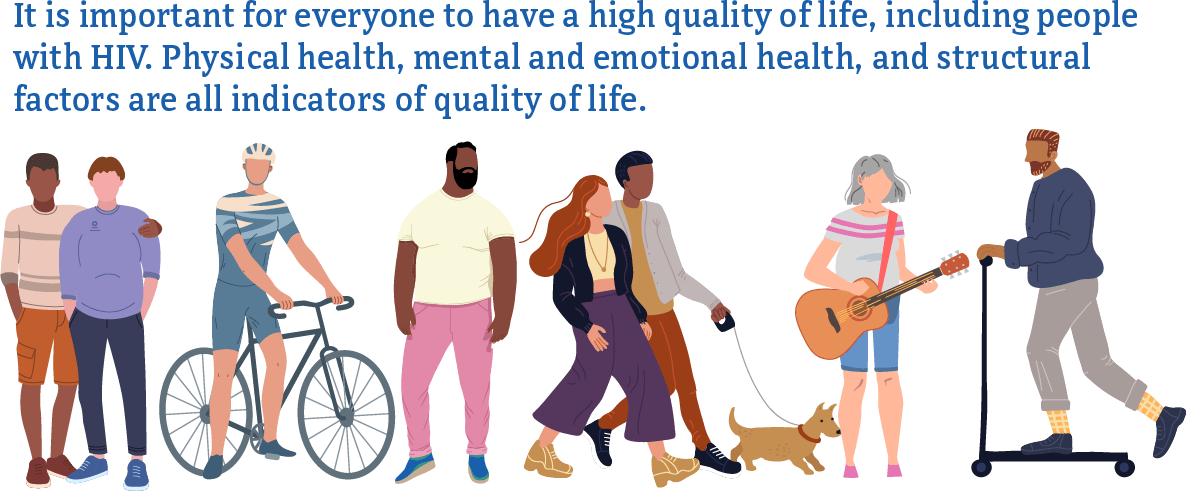
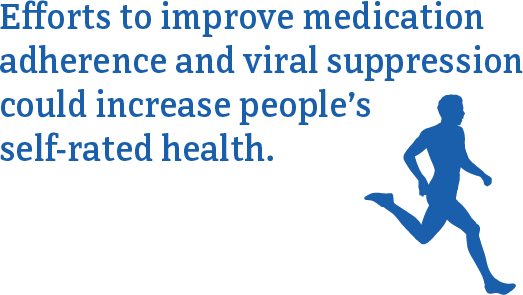
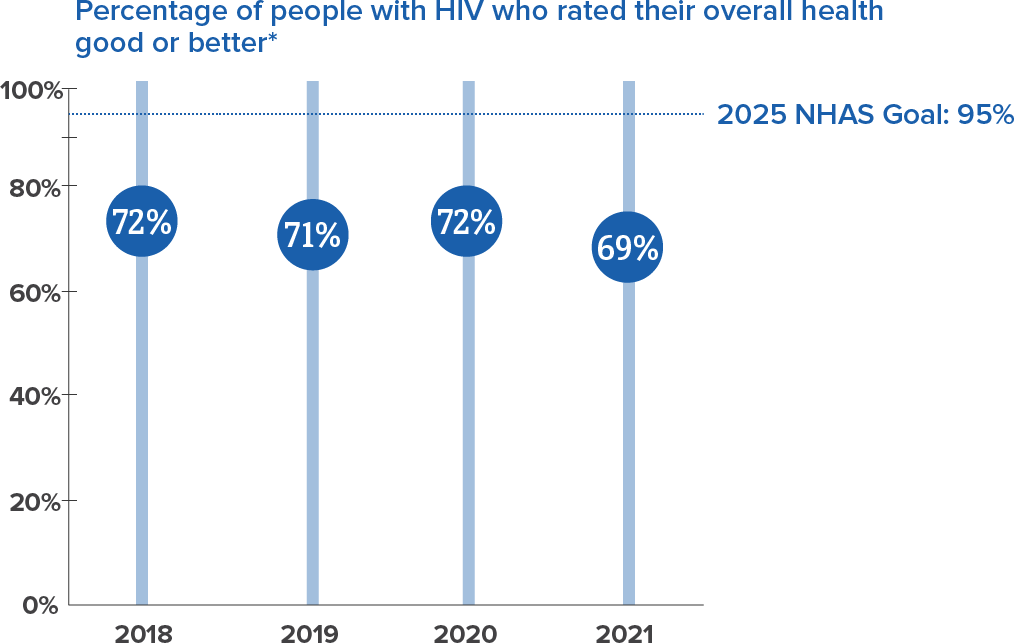
* Good or better self-rated health is defined as rating one’s health as good, very good, or excellent (as opposed to poor or fair) at the time of interview.
Source: CDC. Behavioral and Clinical Characteristics of Persons with Diagnosed HIV Infection—Medical Monitoring Project, United States, 2021 Cycle (June 2021–May 2022). HIV Surveillance Special Report 2023; 32.
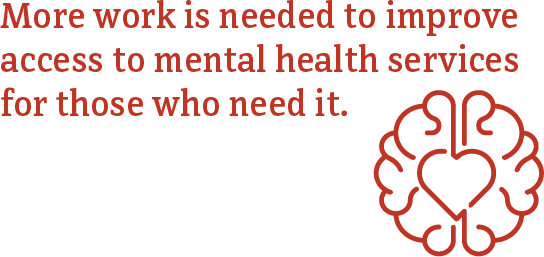
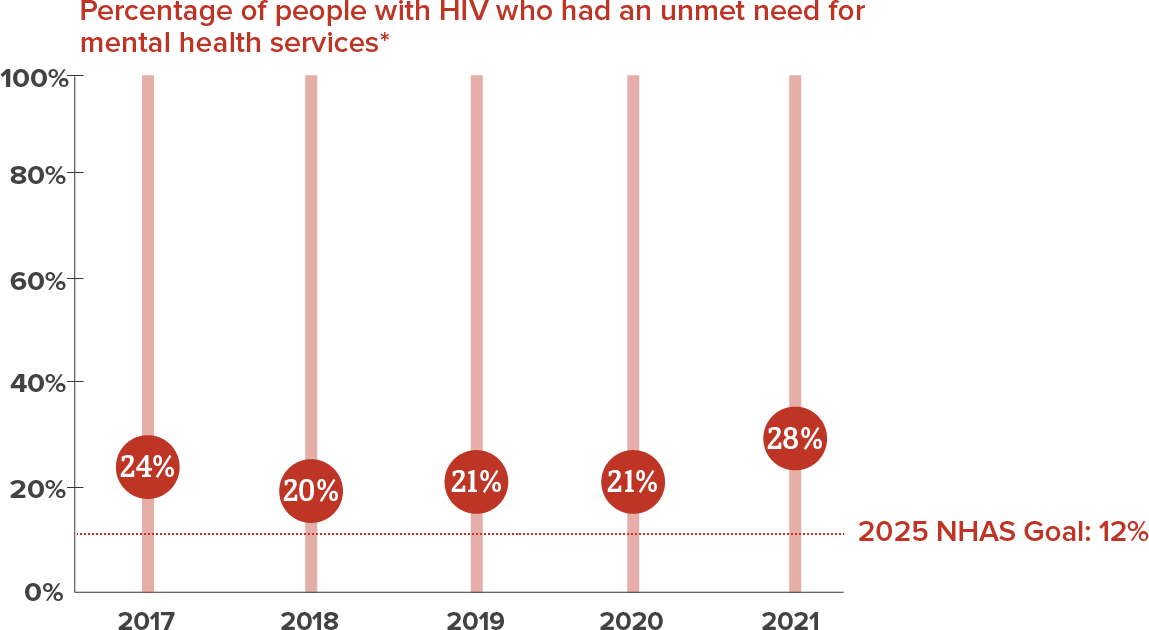
* Unmet need for mental health services from a mental health professional is defined as needing, but not receiving, services from a mental health professional among those who indicated needing mental health services (i.e., receiving or needing but not receiving) during the past 12 months.
Source: CDC. Behavioral and Clinical Characteristics of Persons with Diagnosed HIV Infection—Medical Monitoring Project, United States, 2021 Cycle (June 2021–May 2022). HIV Surveillance Special Report 2023; 32.


* Unstable housing or homelessness is defined as experiencing unstable housing (i.e., moving in with others due to financial issues, moving 2 or more times, or being evicted at any time) or homelessness (i.e., living on the street, in a shelter, in a single-room–occupancy hotel, or in a car at any time) during the past 12 months.
Source: CDC. Behavioral and Clinical Characteristics of Persons with Diagnosed HIV Infection—Medical Monitoring Project, United States, 2021 Cycle (June 2021–May 2022). HIV Surveillance Special Report 2023; 32.

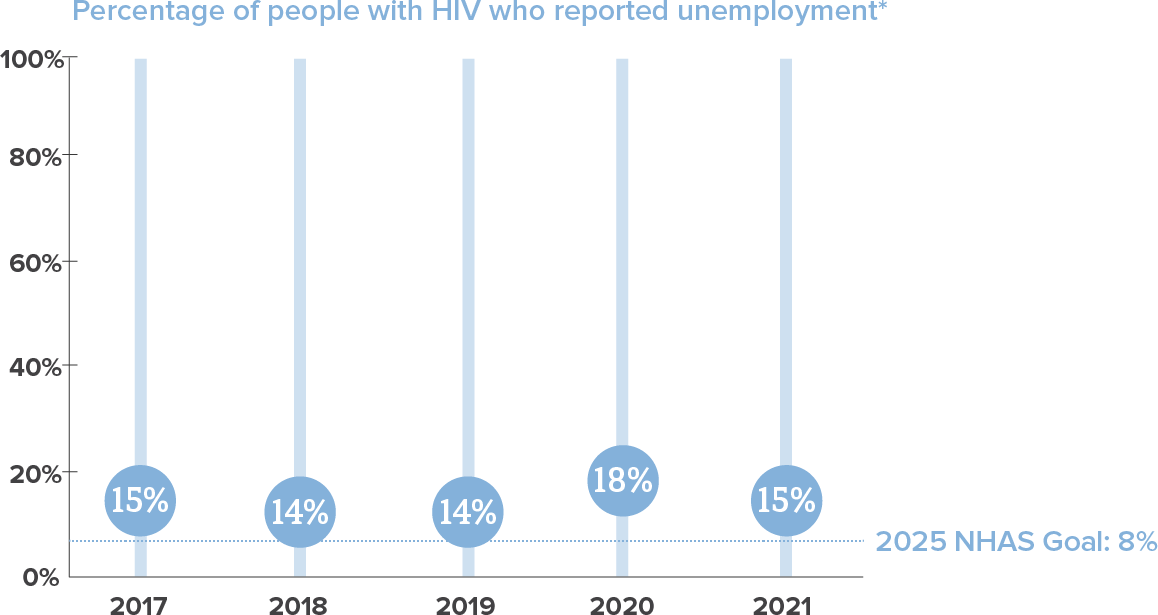
* Unemployment is defined as people who reported being unemployed at the time of the interview.
Source: CDC. Behavioral and Clinical Characteristics of Persons with Diagnosed HIV Infection—Medical Monitoring Project, United States, 2021 Cycle (June 2021–May 2022). HIV Surveillance Special Report 2023; 32.
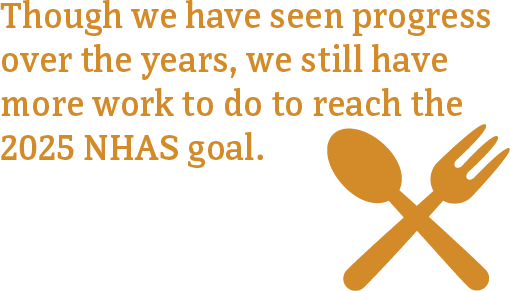
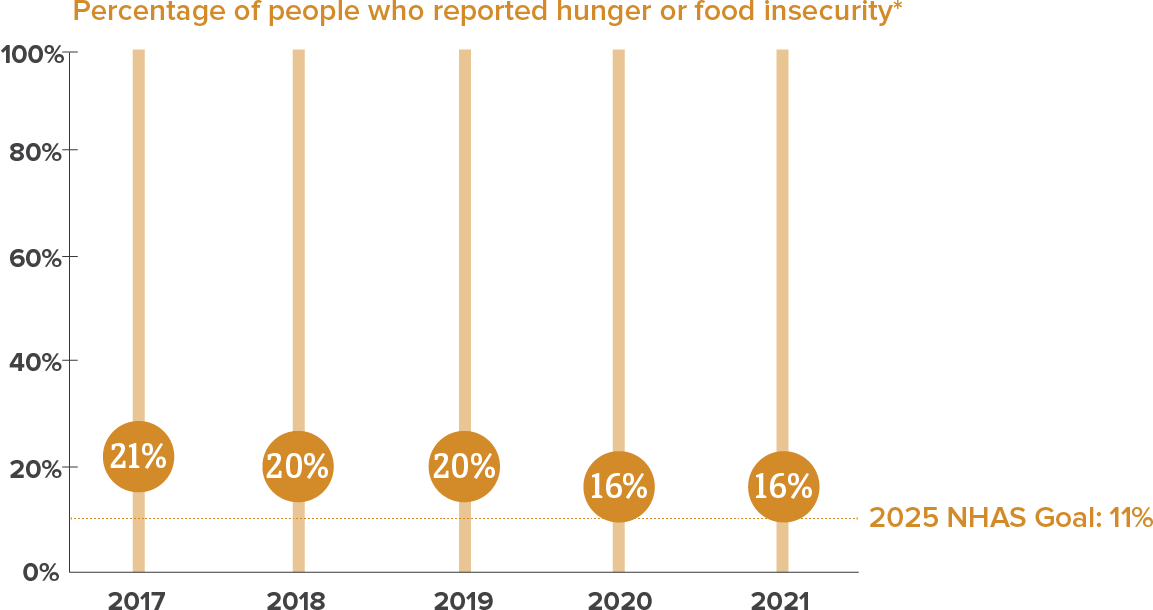
* Hunger or food insecurity is defined as going without food due to lack of money during the past 12 months.
Source: CDC. Behavioral and Clinical Characteristics of Persons with Diagnosed HIV Infection—Medical Monitoring Project, United States, 2021 Cycle (June 2021–May 2022). HIV Surveillance Special Report 2023; 32.
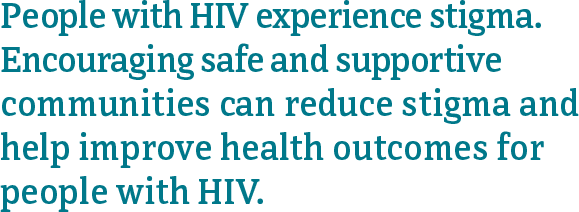
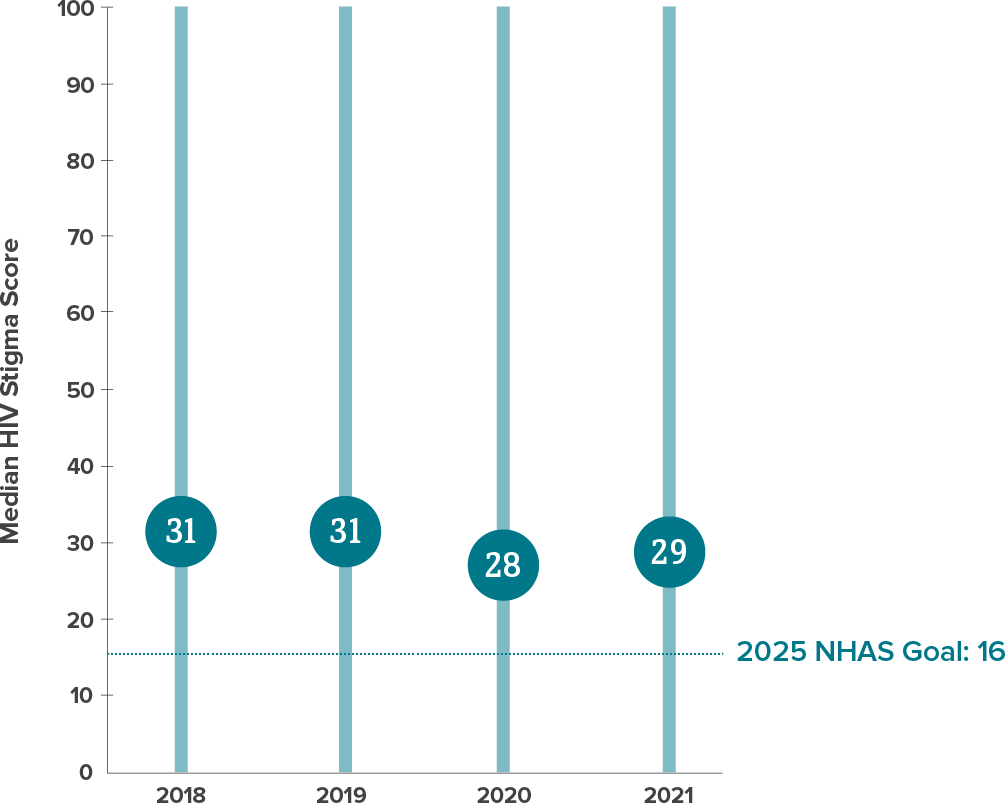
* Median HIV stigma scores are presented based on a ten-item scale ranging from 0 (no stigma) to 100 (high stigma) that measures personalized stigma during the past 12 months, current disclosure concerns, current negative self-image, and current perceived public attitudes about people with HIV.
Source: CDC. Behavioral and Clinical Characteristics of Persons with Diagnosed HIV Infection—Medical Monitoring Project, United States, 2021 Cycle (June 2021–May 2022). HIV Surveillance Special Report 2023; 32.
For Spanish versions of the infographics above, visit CDC’s HIV infographics library.
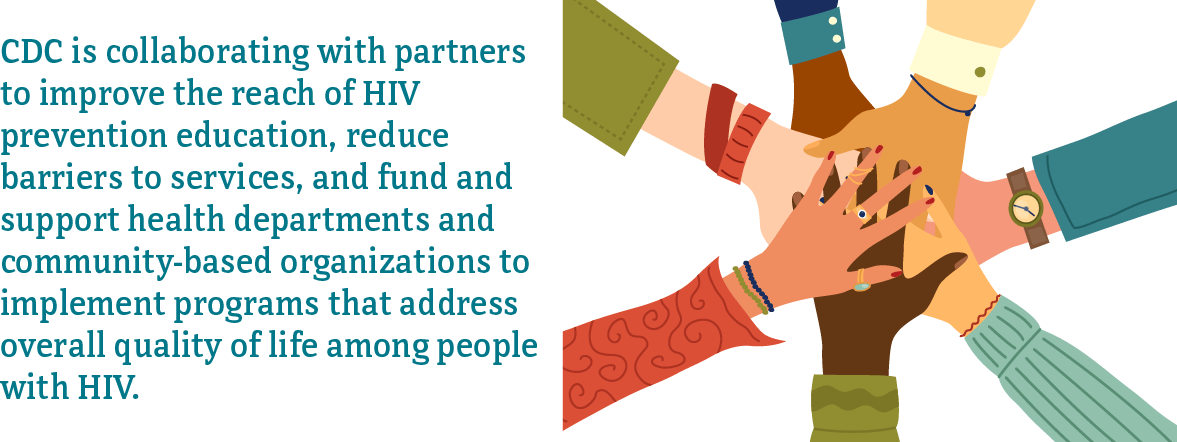
MMP is a cross-sectional, locally and nationally representative sample survey that assesses the behavioral and clinical characteristics of adults with diagnosed HIV. Learn more about the project.
Centers for Disease Control and Prevention. Behavioral and Clinical Characteristics of Persons with Diagnosed HIV Infection—Medical Monitoring Project, United States, 2021 Cycle (June 2021–May 2022). HIV Surveillance Special Report 32. https://www.cdc.gov/hiv/library/reports/hiv-surveillance.html. Published August 2023. Accessed [date].
MMP provides annual, locally and nationally representative behavioral and clinical characteristics among adults with diagnosed HIV. Learn more about the project.
Confidential Information, Referrals, and Educational Material on HIV Infection
CDC-INFO
- 1-800-232-4636 (in English, en Español)
- 1-888-232-6348 (TTY)
- http://wwwn.cdc.gov/dcs/ContactUs/Form
This report was prepared by the following staff and contractors of the Division of HIV Prevention, CDC: Sharoda Dasgupta, Yunfeng Tie, Stacy M. Crim, Tim McManus, Linda Beer, Mohua Basu, Angela Blackwell, Jason A. Craw, Catherine Espinosa, Rodel Desamu-Thorpe, Jennifer L. Fagan, Rikki Johnson, Ruth E. Luna-Gierke, Mabel Padilla, Taylor Robbins, Sandra Stockwell, Jennifer Taussig, John Weiser, R. Luke Shouse, Joseph Prejean, and Michael Friend (editing).
Graphics and web design by the following staff and contractors of the Prevention Communication Branch: Karen Rothschild, Jeremy Outman, Nitesh Parmar, and Dominique Thomas.
Acknowledgments
This report is based, in part, on contributions by Medical Monitoring Project (MMP) participants, community and provider advisory boards, interviewers, and abstractors; the Data Coordinating Center for HIV Supplemental Surveillance at ICF International; and members of the Clinical Outcomes Team, Division of HIV Prevention, National Center for HIV, Viral Hepatitis, STD, and TB Prevention, CDC, Atlanta, Georgia.